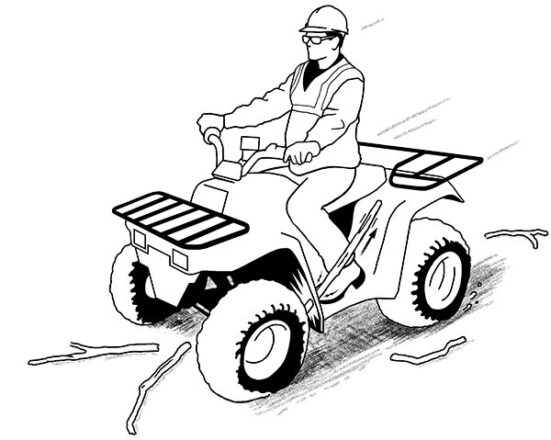Logger Training and Education (LT&E)

Every year, FRA collects Logger Training and Education (LT&E) information from forestry and logger associations throughout the country. Each state has built its own program, and the requirements differ from state to state.
The reports include:
- Required Certified Logger Training Courses
- Recertification training
- Online training
- Continuing Education
- Training summary of total attendees
- Projected summary of attendees for the current year
Among the required courses is the First Aid and CPR course. Occupational Safety and Health Administration (OSHA) regulations require this training for all loggers. That’s great when you’re talking about the most dangerous job in the country. Loggers face significant injury or death every day, and I can’t think of better training than a skill that could save someone’s life!
Additionally, OSHA requires first aid kits. These aren’t just basic first aid kits; they must include specific items. Do you know what’s inside your box? I’ve included a photo of the required items.

Earlier this year, I purchased a logger first aid kit for my chainsaw training classes, and I was surprised when I checked out what was “inside the box.”
My old first aid kit did not have a tourniquet, splints, resuscitation equipment, solar blanket, triangular slings, etc. You get my drift! It was definitely time for me to upgrade. Expecting the unexpected is never a bad thing, and having a logger’s first aid kit for the unexpected is a must.
After reviewing the LT&E reports from each state, I noted they all have a unique program designed to meet the needs of loggers in their specific regions. I’ve reviewed many of the programs and their continuing education modules. They’re quite interesting, and I’ve included those websites so you, as an FRA member, will have them available if/when you need logger training or a Continuing Education (CE) topic.
My small business, Jenkins Forestry Solutions, offers logger training, and I’m constantly reviewing websites of forestry associations, YouTube videos, CE Webinars, and training modules. I’m interested in the best content for safety and training. For example, recently, I was looking for a training video that provided a good view of how to do a unique cutting technique called the “Limb Lock,” “Top Lock,” and “Tongue-and-Groove” cuts. You can Click Here to watch. If you’ve never heard of those techniques and use a chainsaw, I absolutely recommend watching it. These cuts provide added protection when topping and limbing trees – and it’s free (just give it a minute or two to load…)
The following is not an inclusive list of state LT&E training, but it will get you started:
www.clploggers.com (Maine Certified Logging Professionals Program)
www.idahologgers.com (Associated Logging Contractors)
www.loggersassociation.org (Loggers Association of Northern California)
www.coloradotimber.org (Colorado Timber Industry Association)
www.oregonloggers.org (Oregon Loggers Association)
www.loggers.com (Washington Contract Loggers Association)
www.tnforestry.com (Tennessee Forestry Association)
Maryland-Delaware Master Logger Program | University of Maryland Extension (umd.edu)
(Maryland-Delaware Master Logger Program)
www.wvforestry.com (West Virginia Division of Forestry)
www.ohioforest.org (The Ohio Forestry Association)
(PA SFI Professional Timber Harvester Training Program)
www.SHARPlogger.vt.edu (Sharp Logger Website)
The 2021 LT&E reports clearly show that Logger Training and Education is a continuous process. There are many loggers attending classes to meet the requirements of a Master Logger Certification in their state or region. Some loggers may even think it’s time wasted. We’ve all been there. When I’ve been required to attend training, how I view the training all depends on the presentation, content, and presenter. You don’t have to get all three of those elements perfect, but at least 2 out of 3 – and that’s not always easy. I’ve asked for feedback from my logger training participants, and I value their comments and opinions. They have given me food for thought and an enhanced desire to improve my training methods. There’s an unlimited talent pool for logger training.
I know some great extension specialists, private industry leaders, and association members who are tasked to develop training that is relevant and beneficial to loggers, and loggers are expected to become more professional at their jobs. As we continue to develop and receive training, the goal will always be for both trainers and trainees to improve their skillset. A lot is going on in Logger Training & Education, and I’m looking forward to the future and what we can collectively do to keep it bright!


